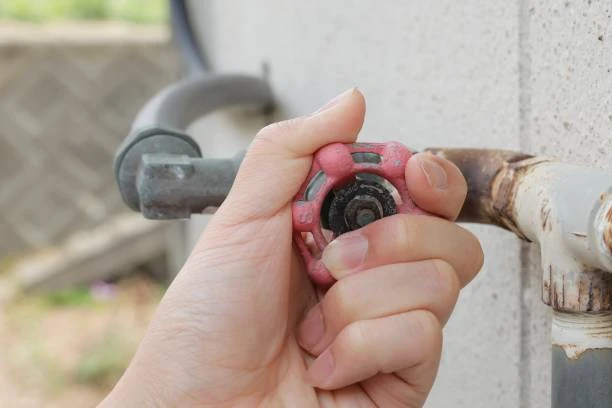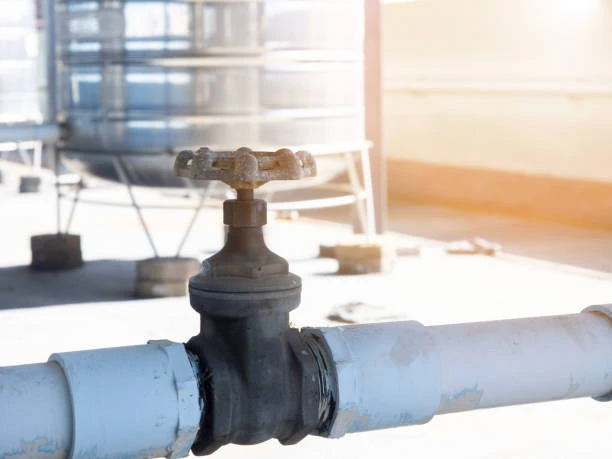It’s a scene that could easily be mistaken for a puzzle: A man walking down a familiar road spots a mysterious valve attached to a roadside cabinet. Intrigued, he wonders what purpose this strange valve might serve, only to be left with more questions than answers. With the valve sitting there, seemingly out of place, it sparks curiosity and raises questions about its function, safety, and potential risks. However, it’s not just the valve itself that worries him – it’s the reactions and the blunt questions people might ask when confronted with something unknown or seemingly dangerous in the public space.
This article explores the mystery behind roadside valves, why they often spark public curiosity, and how people should approach such discoveries. We will also dive into the possible explanations for what this particular “mystery valve” could be, its safety implications, and how members of the public can respond appropriately when encountering something unexpected in the environment.
What Is a ‘Mystery Valve’?
A valve is a mechanical device used to regulate, direct, or control the flow of liquids or gases within a system. Valves are commonly used in plumbing, gas pipelines, industrial machinery, and even in everyday items such as household water systems. But when an ordinary citizen stumbles upon a valve in an unusual setting—like on a roadside cabinet—it’s easy to become puzzled.
Roadside cabinets are typically installed to house electrical or communication equipment, like telecommunication boxes, power switches, or traffic control systems. These cabinets often have various components like fuses, switches, and cables to support infrastructure needs. A valve on such a cabinet, however, is not something people would typically expect to see. The sudden presence of such a device can lead to confusion, sparking questions such as: What is its purpose? Who installed it? Is it safe?
The term “mystery valve” is fitting here, as the valve may not be immediately identifiable to a passerby, who has no idea what role it plays in the broader system it is a part of. But before diving into the specific concerns people might have about a “mystery valve,” let’s explore some common possibilities for its presence.

Possible Explanations for a Mystery Valve
Several types of valves could potentially be found on roadside cabinets, and their functions may vary depending on the specific system they are part of. Below are some possible explanations for what this “mystery valve” might be:
1. Pressure Relief Valve
One possible explanation is that the valve is a pressure relief valve. Pressure relief valves are used in systems that carry gas or liquid to prevent the pressure from building up to dangerous levels. These valves are crucial in preventing equipment damage or catastrophic failures. A roadside cabinet housing critical infrastructure, such as water systems or gas lines, could have such a valve to ensure safety by maintaining appropriate pressure levels.
2. Water or Gas System Valve
Another plausible explanation is that the valve is part of a water or gas utility system. For example, in some urban or suburban areas, cabinets located on streets or roadsides house equipment that controls the flow of water or natural gas. The valve could be a part of this system, regulating the flow of gas or water in response to demand or maintenance needs. These kinds of valves are often accessed by utility workers but might also be visible to the public in certain circumstances.
3. Traffic or Signal System
In certain cases, roadside cabinets may contain valves that are part of traffic control systems, including those managing the flow of traffic signals, streetlights, or even automated vehicle systems. A valve in this context might be used to control fluid or gas-based systems that power or regulate automated traffic control mechanisms.
4. Environmental Control System Valve
Certain roadside cabinets are used to monitor or control environmental systems. In areas where environmental safety is a concern—like industrial zones or areas close to hazardous waste disposal—the valve might be part of a safety system that regulates or isolates hazardous materials. It could control ventilation, air quality, or even water runoff systems designed to keep pollutants under control.
5. Emergency Shut-Off Valve
It’s also possible that the valve is an emergency shut-off valve, installed to quickly stop the flow of fluids or gases in case of a system failure or emergency. In industrial or high-risk areas, emergency valves are essential to mitigate risks and limit the damage that could result from an accidental release of hazardous materials.
6. Utility Maintenance Valve
Lastly, the valve could be related to a maintenance system used by utility workers. In some cases, utility companies install valves in public spaces to facilitate maintenance of the systems without having to enter private property. These valves could control access to underground water, gas, or electrical infrastructure.
Why the Mystery Valve Sparks Curiosity
While all of these possible explanations make sense, they still don’t resolve the primary question for many: Why is it there in the first place? And perhaps more pressing for the person who found it: Is it safe?
When someone encounters something unknown—especially something that could have safety implications—it’s only natural for them to feel uneasy. A “mystery valve” is one of those objects that can be seen as both intriguing and potentially dangerous. A passerby might wonder if it’s been tampered with, or if it could malfunction and pose a risk to the community. This kind of curiosity is heightened by the fact that many people are unfamiliar with the workings of infrastructure systems. And the presence of a valve in a public space may be unsettling.
People might also worry about the potential for vandalism or misuse. What if the valve were to be opened or closed inappropriately? What might happen if the wrong person tried to interact with it? The idea that it could cause harm, whether directly or indirectly, understandably raises alarm.
Responding to the ‘Mystery Valve’
When encountering something like a “mystery valve,” it’s important for the public to approach it with caution and mindfulness. Here are several key steps that anyone who stumbles upon such a valve can take to ensure that it is dealt with properly:
1. Don’t Interact with It
First and foremost, it is important not to interact with the valve, especially if you don’t know its function. Opening, closing, or tampering with any kind of valve can cause unintended consequences. Which particularly if it is part of a larger system. Avoiding physical contact is the safest course of action.
2. Report the Find to Authorities
If you find a “mystery valve,” the safest option is to report it to the appropriate authorities. For example, you can contact your local utility company, public works department, or even the police, depending on the situation. They will have the knowledge and expertise to assess whether the valve is functioning properly and if there is any immediate risk to public safety.
3. Inform Your Neighbors or Community
If you believe the valve is part of an infrastructure system that might affect your neighborhood—such as a water or gas valve—it’s important to inform others. While local authorities should be notified, informing your neighbors can ensure that the community is aware of the potential hazard and can take necessary precautions.
4. Avoid Jumping to Conclusions
It’s easy to assume the worst when encountering something unknown. But jumping to conclusions about the valve’s purpose or risks could lead to unnecessary panic. Instead, allow experts to investigate and determine the situation. While it’s natural to worry, it’s also essential to remain calm and let the proper authorities take charge.
5. Stay Informed
Finally, it’s always helpful to stay informed about the infrastructure in your area. Knowing the systems and types of equipment that are common in your community can help you understand what you might be encountering in the future. Being informed can reduce the level of concern and help you make better decisions when faced with unusual objects or situations.
Conclusion
The discovery of a “mystery valve” on a roadside cabinet is a situation that prompts curiosity and concern in equal measure. While the exact function of the valve remains unclear without further investigation. The most important thing to remember is that safety should always be the priority. If you come across a mysterious valve in your area. Which refrain from interacting with it, report it to the relevant authorities, and allow professionals to investigate. The most important takeaway from such a discovery is that no one should assume they know what it is or what it does—rather, it’s best to leave that determination to the experts.
Frequently Asked Questions (FAQ)
1. What is a “mystery valve” on a roadside cabinet?
A “mystery valve” is an unknown or unexplained valve found on a roadside cabinet. These cabinets typically house infrastructure systems for utilities, communications, or traffic control, and the valve may regulate, control, or isolate fluids or gases.
2. What should I do if I find a mystery valve?
If you find a mystery valve, do not attempt to interact with it. Instead, report the discovery to local authorities, utility companies, or public safety officers who can assess the situation and ensure proper handling.
3. Could a mystery valve pose a risk to public safety?
Yes, a mystery valve could pose a safety risk. Which especially if it is part of a system that regulates gas, water, or electrical infrastructure. If tampered with or mishandled, it could cause leaks, system failures, or other hazards.
4. Why would a valve be located on a roadside cabinet?
Valves are sometimes installed on roadside cabinets as part of utility systems that manage gas, water, or traffic signals. These valves are typically there for maintenance, pressure regulation, or emergency shut-off purposes.
5. How can I know if a valve is part of a dangerous system?
If you’re unsure about the nature of a valve. It’s best to assume caution and report it to the appropriate authorities. Experts can determine its function and assess any potential safety risks based on the location and design of the infrastructure.

















